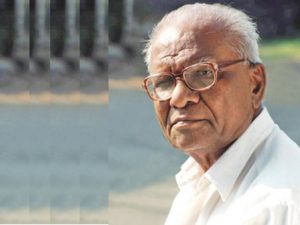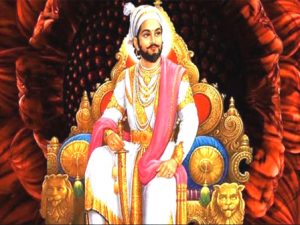Have We Lost Govind Pansare’s Shivaji Forever?
From a person whose reign is literally textbook lessons on public administration, Shivaji is probably confined to party politics; and now also a line item in the budget for a statue. Who was Shivaji? Govind Pansare’s book locates Shivaji in terms of what he should ideally be revered for.

Another 19 February. There would again be pompous events to celebrate Shivaji Jayanti. The statue of Shivaji, which is being planned in the Arabian Sea, at 210 metres, is going to be the tallest statue in the world, and that it is going to be taller than the statue of Sardar Patel would also be a discussion point. Shivaji’s resurrection as the symbol of one religion or even one caste is almost complete at this time of communal polarisation. The mainstreamed narrative again is about Shivaji having founded the Hindu Empire; and he being a ‘Go Brahman Pratipalak’ (protector of cow and brahmin) king. From a person whose reign is literally textbook lessons on public administration, Shivaji is probably confined to party politics; and now also a line item in the budget for a statue. The statue would be costing the public exchequer an exorbitant amount of Rs 3643 crore. The real cost is, of course, exponentially more if one looks from how Shivaji gets ‘used’ in the contemporary polarising politics.
Tomorrow, 20 February 2020, is the fifth death anniversary of Govind Pansare. Even after five years of his murder, the trial has not begun yet, and the justice system needs to be judged. Govind was murdered, and so Dabholkar (who was murdered two years earlier), Kalburgi (murdered six months later) and Gouri Lankesh (murdered two years later), who were among those who promoted rationalist thoughts. The murderers of none of them have been brought to justice. Among many other things, Govind is known for his 1987 speech ‘Shivaji Kon Hota?’ (‘Who was Shivaji?’), which later became a book that has sold over two lakh copies in many languages.
Also Read : Revisiting A Murder And What It Takes
Govind’s Book, ‘Who was Shivaji?’ locates Shivaji in terms of what he should ideally be revered for, and also tries to dispel a number of myths associated with him. For Govind, Shivaji was unique among kings for many reasons. The book claims that he is among the first ruler to try breaking the social order of feudalism by creating a direct link with the Ryots. He exercised power to help ryots by making sure that ‘feudatories do not harm ryots in any manner’. He changed administrative language to Marathi. Govind has cited incidences to explain how “the ryots, the common men and women believed that Shivaji had taken up their mission and that he had founded their state”. Shivaji inspired self-sacrifice among people. Govind gives example of an impoverished barber, Shiva, acted as Shivaji’s double allowing the latter to escape, and allowed himself to be captured. Similarly Madari Mehtar and Hiroji Farjand were prepared to embrace death and allowed Shivaji to escape from Aurangzeb’s confinement. How did Shivaji earn this kind of support from people? Govind attributes this to the way ‘he treated his subjects and the way in which he approached the ryots’. Ryots for the first time experienced a new social order, which continued in the memories of the society for very long through smaller traditions. Govind clearly disagreed with the concept of “king” and super heroism derived from feudal system.
Govind goes on to describe how Shivaji, after having won a number of battles and despite conquering many forts between 1645 and 1674, realised that the challenge for him in becoming a Chatrapati was no longer the Mughal Army, but from the dominant Hindu scriptures.
He suffered the inequities imposed by Varna system. Govind writes, “High caste Brahman or high-caste Marathas were not initially prepared to accept Shivaji Bhonsle as their leader and king….. Shivaji won his kingdom by his strength and bravery, as well as by clever strategies and tactics. Even Aurangzeb respected him. But the upholders of Hindu religion did not respect him. That is why he had to get his coronation performed twice.”

Govind borrows the above from the history book of 1919, written by Jadunath Sarkar, a well-known historian. Jadunath writes, “There was one curious hindrance. According to the ancient Hindu scriptures, only a member of the Kshatriya caste can be legally crowned as king…The Bhonslas were popularly known as mere tillers of the soil…How could an upstart sprung from such a Shudra stock aspire to the rights and honours due to a Kshatriya?” Shivaji’s ministers searched for a Brahman to lead the coronation. None from Maharashtra was willing. They however could find a brahmin in Benares, who became compliant, and “accepted the Bhonsla pedigree as fabricated by the clever secretary, Balaji Avji and declared Shivaji as Kshatriya ‘of the purest breed’ descended from the Rajput king.” That was not over. When Shivaji was to be taught mantras, Jadunath writes, “there was a mutiny among the assembled Brahmans, who asserted that the brahmans were the only twice-born caste now surviving… Even Gaga Bhatt was cowed by the general opposition and evidently dropped the Vedic chant and initiated the Rajah only in a modified form of the life of the twice-born, instead of putting him on a par with the Brahmans in this respect.” Shivaji “took the third wife two days after his investiture with the sacred thread in order to assert publicly his right as a ‘twice-born’ to hear Vedic mantras”. Sarkar writes, “Shivaji keenly felt his humiliation at the hands of the Brahmans to whose defence and prosperity he had devoted his life”. A lot of sum of money was spent on alms, fees and donation to Brahmans and to feed the guests for months. “The coronation exhausted Shivaji’s treasury and he was in need of money to pay his troops”.
These caste-episodes followed his descendants into even 20th century. Between 1894 and 1922, one of the descendants of Shivaji, Shahu was the Raja of Kolhapur. In October 1899, when Shahu went for his Holy Bath, a priest Narayan Shastri was reciting Mantras as Shahu started his bath. Another priest told Shahu that Narayan Shastri was chanting the Puranokta Mantras instead of ‘Vedokta’ and that he was doing that without taking bath himself. When Shahu asked explanation for this, Narayan Shastri very arrogantly answered back, ‘The Shudras are entitled to ‘Puranokt’ Mantras only’. Various explanations were given, when it was told that Vedokta rites were done at the coronation of Shivaji, such as “Gaga Bhatta who performed Vedokta rites at the coronation of Shivaji died in a lavatory soon after, and Jijabai, the mother of Shivaji, also died after some days”. But, Maharaja Shahu did not take this lightly. He escalated it and took action against the priest and Brahmins who stood against Vedokta rites, including the removal of the then head priest. Finally after six years, in 1905, these priests surrendered to Shahu. This was not before these priests writing petitions over petitions to the British Government to take action against the Chatrapathi Shahu.
The caste of Shivaji and his descendants refuses to disappear even in the 21st century. On 29 December 2017, some miscreants desecrated the statue of Govind Gopal Mahar, a dalit, which created tension between dalits and Marathas.
Also Read : Through The Waves Of Womens Liberation
One version of the history states that Aurangzeb, after getting Sambhaji, son of Shivaji, murdered, warned the populace against performing the last rites of Sambhaji, but defying the orders, Govind Gopal Mahar performed the last rites of Sambhaji.
The village, Vadhu Badruk, hosts memorials of Sambhaji as well as Govind Gopal Mahar. The Marathas, however, do not accept, or rather digest, this version of history, that a dalit performed the rites of the Maratha, Sambhaji.
A few kilometers away from Vadhu Badruk, there is another village, Bhima Koregaon, in which stands a Victory Pillar, which is visited by lakhs of people every year since early 1990s. In 1928, Ambedkar led the first commemoration of dalit soldiers at this site. In 1818, the British Army, which included Mahar soldiers, defeated the superior force of Peshwa Baji Rao-II. Ambedkar symbolised this victory as that of dalits against the Brahmin oppression. Incidentally, it was Shivaji who appointed Moropant Pingle, a Deshastha Brahmin, as the first Peshwa, after his coronation in 1674. While lakhs of people visit the Victory Pillar every year, on 1 January 2018, for the first time, Bhima Koregoan faced violence and deaths. The Elgar Parishad case has unfortunately got imprisoned in the polarising politics characterised by nation, religion and caste.
Govind Pansare identified himself more with Jyotiba Phule, who called Shivaji “Kulwadi Bhushan” (Jewel of peasants). Probably, more in subaltern history, one would find that Phule being credited to have restored Shivaji’s tomb, having first started Shivaji Jayanti festival in 1870, before Tilak mainstreamed it with a different overtone, and his powada (ballad) on Shivaji, portraying him as the jewel of peasants. At the end, we, the people, need to decide, that in February 2027, when the nation would be celebrating the 400th birth centenary of Shivaji, what aspect of him would we be celebrating? The fear is that we would have lost the Govind Pansare’s Shivaji forever!
